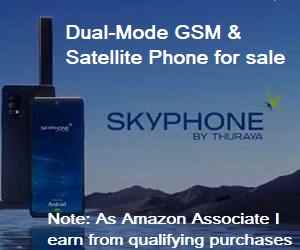Satellite Internet Forum.
Welcome, Guest. Forum rules.To search this site click here > SATSIG search
| Home Login Register |
| Satellite Internet forum › Satellite Connection in Africa › HX and Telstar 11 triumph |
|
Pages: 1
|
HX and Telstar 11 triumph(Read 3765 times) |
|
A.Walker
Senior Member
★★★ Offline Posts: 316 |
Jun 18th, 2009 at 10:45am
|
| Back to top |
IP Logged
|
|
Ex Member
Ex Member
|
Reply #1 - Jun 18th, 2009 at 12:47pm
|
| Back to top |
« Last Edit: Jun 18th, 2009 at 9:13pm by N/A »
IP Logged
|
|
Maxim Usatov
Senior Member
★★★ Offline Posts: 116 Czech Republic |
Reply #2 - Jun 18th, 2009 at 1:32pm
|
| Back to top |
IP Logged
|
|
A.Walker
Senior Member
★★★ Offline Posts: 316 |
Reply #3 - Jun 18th, 2009 at 4:54pm
|
| Back to top |
IP Logged
|
|
A.Walker
Senior Member
★★★ Offline Posts: 316 |
Reply #4 - Jun 18th, 2009 at 5:00pm
|
| Back to top |
IP Logged
|
|
Maxim Usatov
Senior Member
★★★ Offline Posts: 116 Czech Republic |
Reply #5 - Jun 18th, 2009 at 5:11pm
|
| Back to top |
IP Logged
|
|
A.Walker
Senior Member
★★★ Offline Posts: 316 |
Reply #6 - Jun 18th, 2009 at 5:18pm
|
| Back to top |
IP Logged
|
|
A.Walker
Senior Member
★★★ Offline Posts: 316 |
Reply #7 - Jul 1st, 2009 at 9:18am
|
| Back to top |
« Last Edit: Jul 21st, 2009 at 8:29pm by Admin1 »
IP Logged
|
|
Ex Member
Ex Member
|
Reply #8 - Jul 1st, 2009 at 12:24pm
|
| Back to top |
IP Logged
|
|
SatmasterDoh
Member
★★ Offline Posts: 1 |
Reply #9 - Jul 21st, 2009 at 7:04pm
|
| Back to top |
« Last Edit: Jul 21st, 2009 at 8:28pm by Admin1 »
IP Logged
|
|
Admin1
YaBB Admin
★★★★★ Offline Posts: 1252 |
Reply #10 - Jul 21st, 2009 at 8:56pm
|
| Back to top |
« Last Edit: Jul 21st, 2009 at 10:45pm by Admin1 »
IP Logged
|
|
Pages: 1
|
Email me: eric@satsig.net
Powered by YaBB 2.5.2!
YaBB Forum Software © 2000-. All Rights Reserved.
Disclaimer, Terms of Use and Privacy Forum User Agreement Forum rules Cookie policy.


